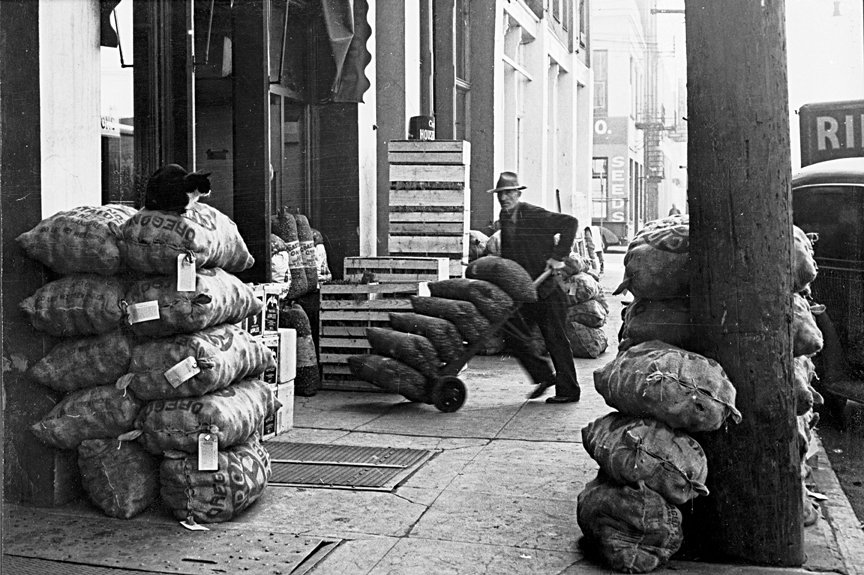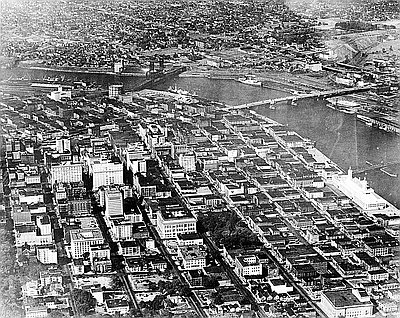In this photograph, a man moves bags of onions into a produce warehouse in the wholesale district on Union Avenue, which was renamed Martin Luther King, Jr., Boulevard in 1991. Portland has historically been a center of commerce and distribution, rather than industry, and wholesale distribution of agricultural produce played a key role in the city's economic development.
Portland, established in 1843 and incorporated as a city in 1851, quickly became a center of trade in the Northwest. Agricultural goods from throughout the region, including fruits and vegetables, were funneled through Portland to local and faraway consumers. As the town's density increased, it was connected to areas of production via a road to the Tualatin Plains in 1851 and railway connections to the East in 1884 and to California in 1887. In Portland, farmers first sold produce directly to consumers from displays in wagons along the park blocks. As traffic increased in downtown, wholesalers increasingly took on the job of distributing produce.
The warehouse district in which this photograph was taken was established near railways, and produce wholesalers unloaded most fruits and vegetables directly from trains into warehouses in the early 1900s. Wholesalers also took advantage of the perishable produce warehouses built by the Union Pacific and Southern Pacific Railroads.
During World War I, however, the military advanced truck technology in order to transport troops and supplies over long distances, and surplus trucks were used by private interests after the war. The use of trucks decreased costs in two ways. Whereas railroads had prescheduled stops and timetables, truckers could shift their schedules and destinations to reduce the amount of time perishable goods spent in transportation. Trucks also delivered produce that was less damaged than that transported via railroad, because they did not necessitate the jarring switches that railroads did and had built-in shock absorbers. Large tractor trailers with refrigeration units were used to haul produce over long distances, while fruits and vegetables grown locally were transported in one-half ton trucks. By 1952, a survey noted that 61 percent of produce unloaded in Portland had been transported via trucks.
Further reading:
Gustafson, Richard Frank. An Economic Study of the Portland Wholesale Fresh Fruit and Vegetable Market, M.S. Thesis (Oregon: Oregon State College, June 1952).
Magoon, Charles F. The Way it Was: The Produce Industry in the early years, 1890 to 1930: An Illustrated History (Berkeley Springs: Particularly Produce, 1997).
Written by Eliza Canty-Jones, © Oregon Historical Society, 2007.

